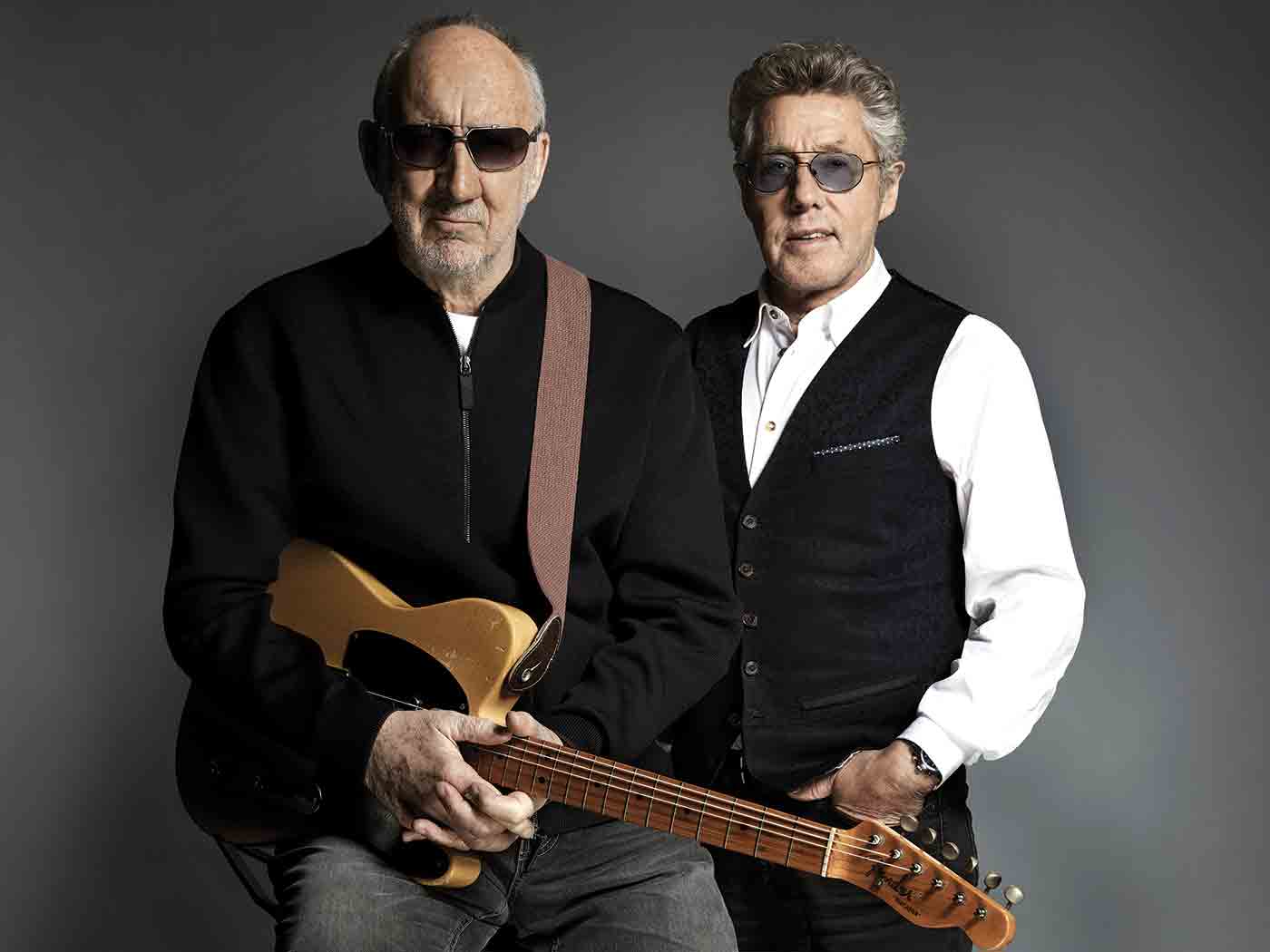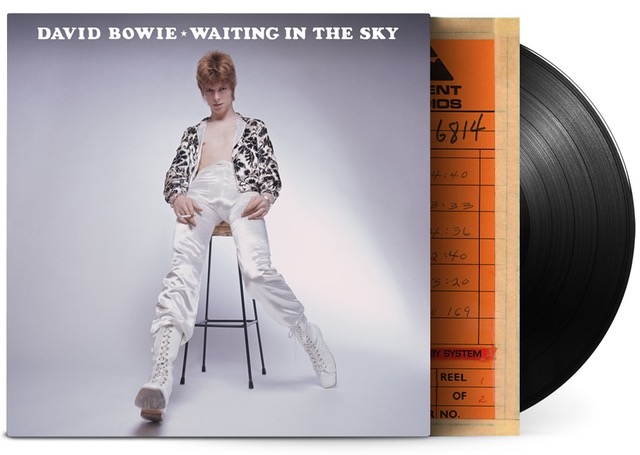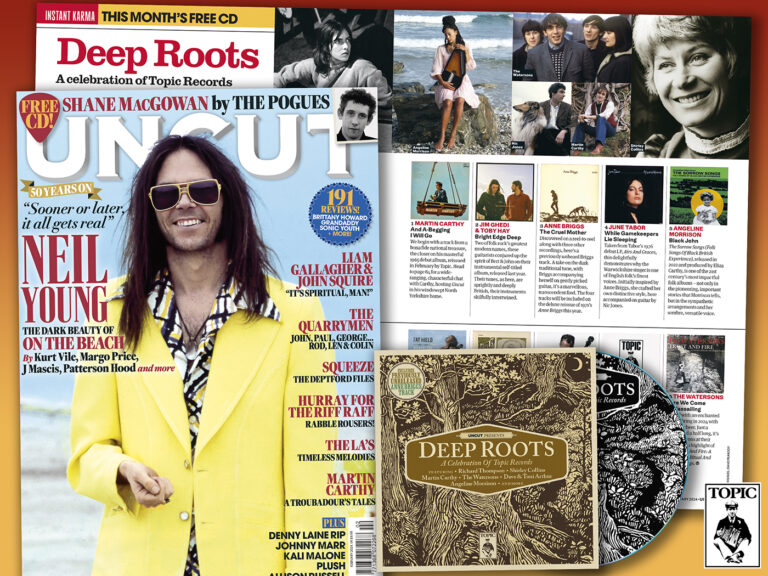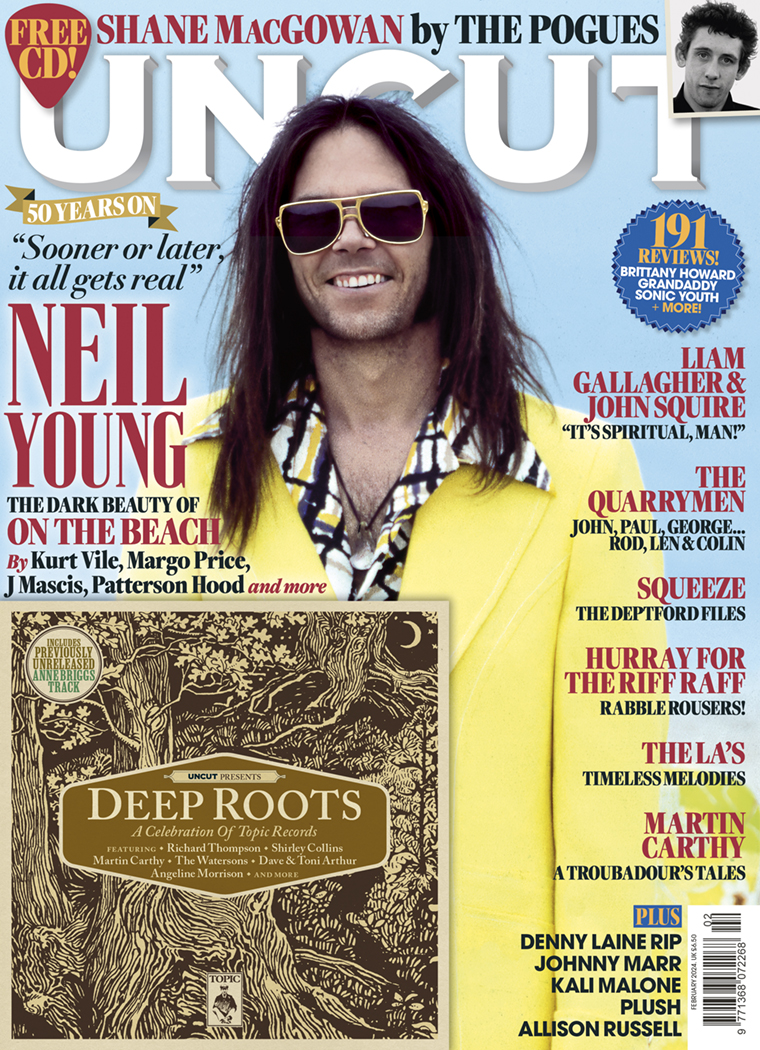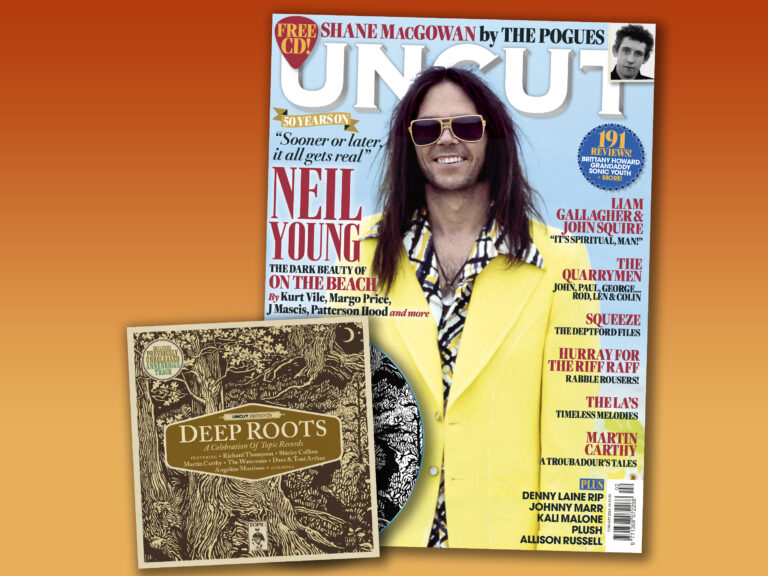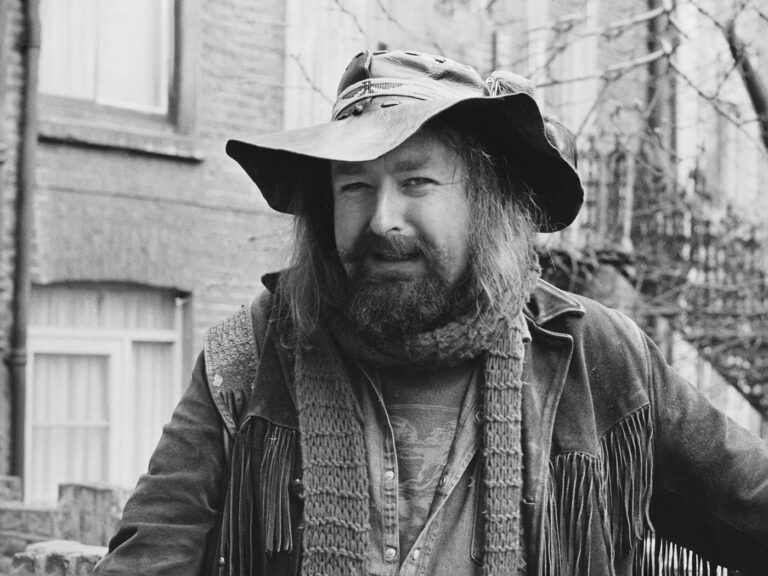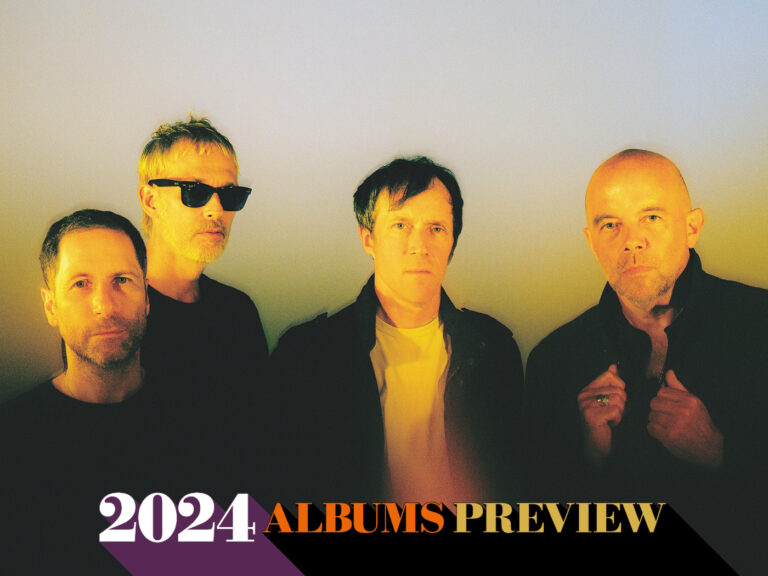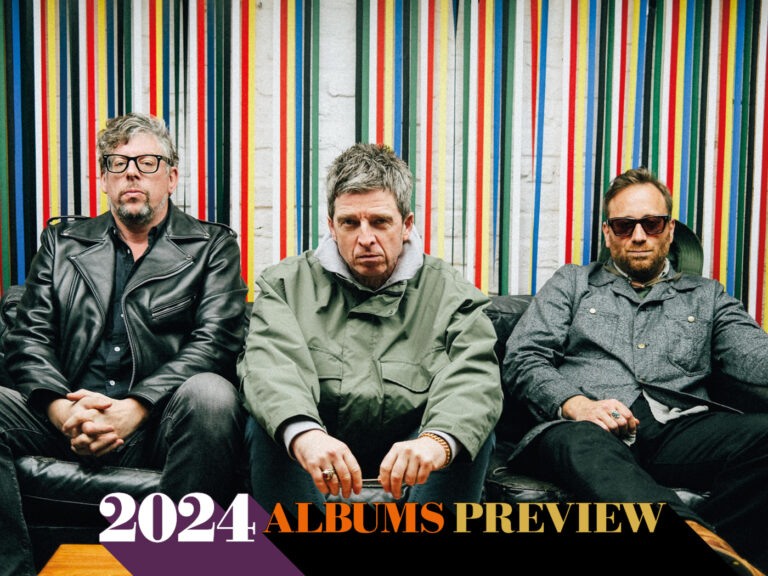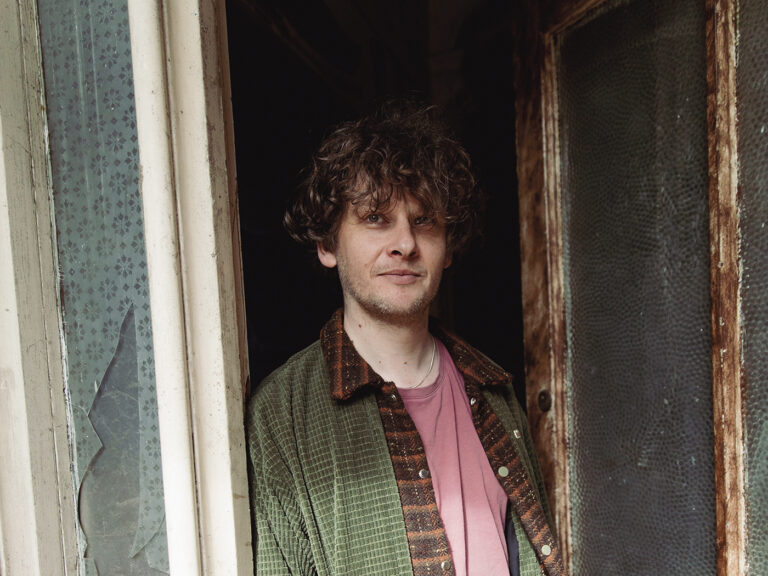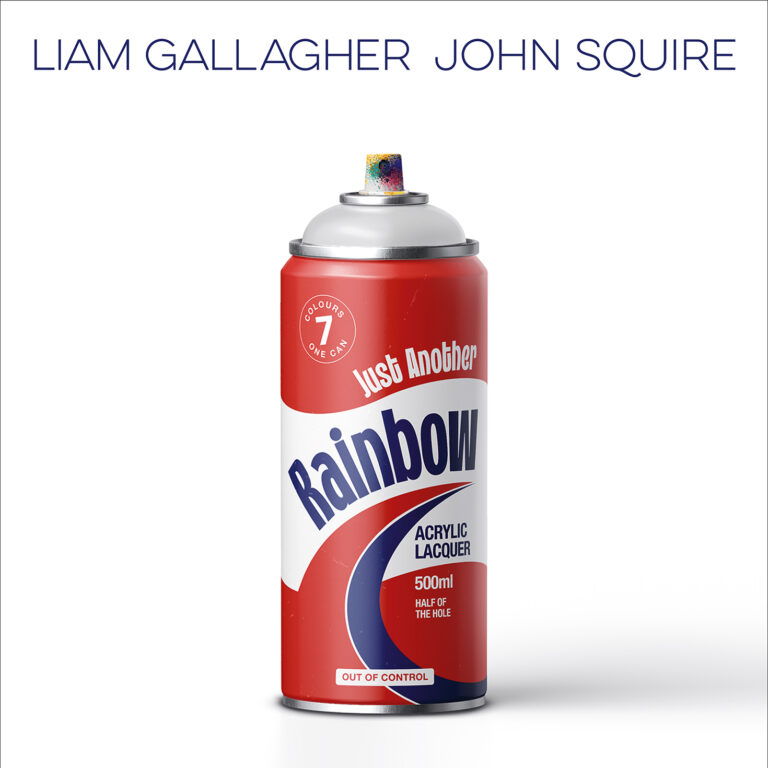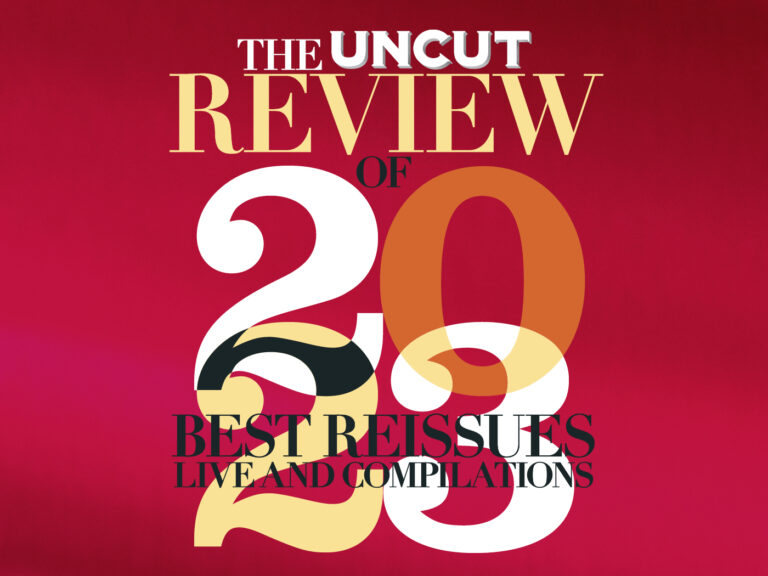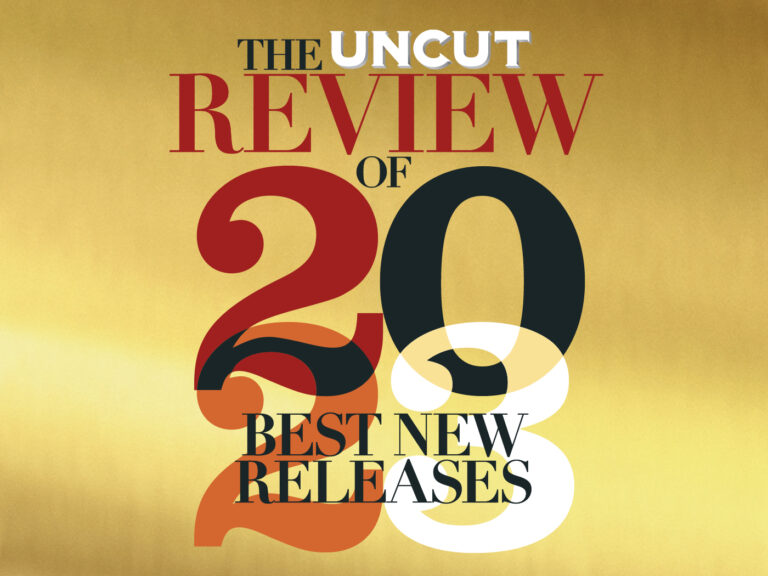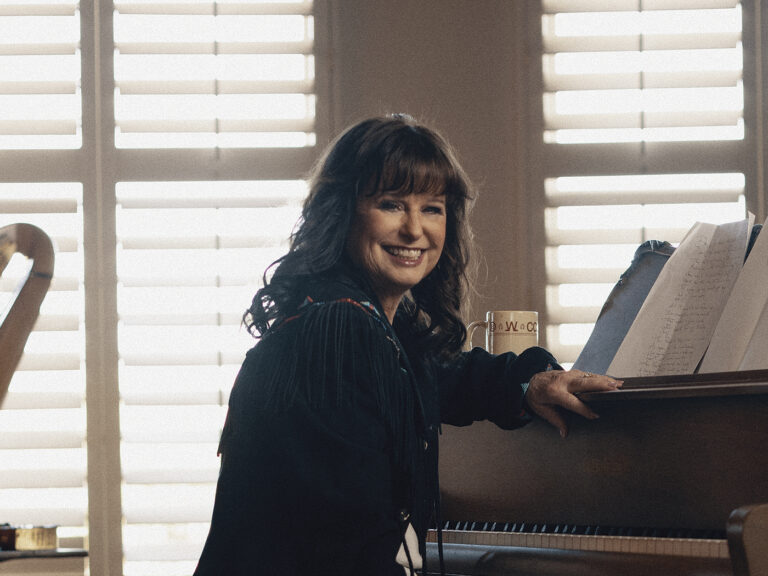KEITH RICHARDS IS ON THE COVER OF THE NEW UNCUT – HAVE A COPY SENT STRAIGHT TO YOUR HOME
50 CRAVEN FAULTS
Standers
LEAF LABEL
The previously anonymous producer played his first live shows in September, but most attendees weren’t too concerned about his identity – they just wanted to gawp at his stupendous modular synth rig. Standers was his/its finest work to date, a series of hypnotic, throbbing epics that moved slowly but relentlessly like limestone scars through the Yorkshire landscape.
49 MARGO PRICE
Strays
LOMA VISTA
Between writing a memoir and launching a podcast series, the Nashville insurgent also found time to head into Topanga Canyon – armed with fierce quantities of psilocybin and weed – to record her fourth studio album with producer Jonathan Wilson. The results could have been woolly, stoned musings, but instead this devastatingly personal song cycle completed Price’s transformation from retro-country preservationist to anything-goes auteur.
48 ALLISON RUSSELL
The Returner
FANTASY RECORDS
Tracing Russell’s trajectory from early outfits like Birds Of Chicago and Po’ Girl via the Our Native Daughters collaborative project to this, her second solo studio album, the Canadian folk-roots performer emerged as a key artist for 2023 – as well as Joni Mitchell’s favourite clarinet player. Embracing soul, jazz and folk, The Returner explored themes of survival and resilience with grace and power, climaxing with the glo riously uplifting sixminute “Requiem”.
47 CIAN NUGENT
She Brings Me Back To The Land Of The Living
NO QUARTER
“I believe in an unwed God/That sleeps all day…” There were bigger reasons for the seven-year gap between Cian Nugent albums than mere indolence, but an ability to channel his vivid Dublin daydreams into song was a key feature of this appealingly warm and unhurried album, topped off by some crunchy Richard Thompson-esque soloing.
46 MODERN NATURE
No Fixed Point In Space
BELLA UNION
After recruiting a number of free-jazz musicians for 2021’s Island Of Noise, Jack Cooper sought to apply their techniques to a more gentle, folkrock idiom. Again, key influences became collaborators – it was great to hear Julie Tippetts in Sunset Glow mode – as Cooper edged closer to his Elysian vision of music moving like “a school of fish, notes breaking the surface and then disappearing.”
45 FEIST
Multitudes
POLYDOR
Although its creation may have been unconventional – Multitudes was first workshopped in a series of experimental live shows around Europe, Canada and America in 2021 and ’22 – Leslie Feist’s latest turned out to tackle big but familiar ideas of new life, old loves and agonising loss, satelliting out from the birth of her daughter and the death of her father. Such soulsearching had its greatest effect, however, when she was at her sparsest and most intimate.
44 EVERYTHING BUT THE GIRL
Fuse
BUZZIN’ FLY/VIRGIN
It’s been 24 years since the last EBTG album, but such creative distance evidently benefited Tracey Thorn and Ben Watt’s unlikely return: even for a duo as sophisticated as Thorn and Watt, there is a maturity at work here that underscores the melancholic, finely detailed stories and fractured beats. “Kiss me while the world decays”, sung Thorn on “Nothing Left To Use”, encapsulating the themes of connectivity, ageing and romance that dominate this record.
43 BLAKE MILLS
Jelly Road
VERVE
Perhaps an upshot of his prowess as a session player, this Blake Mills ‘solo album’ was not your typical acoustic confessional. Created in cahoots with the equally slippery Chris Weisman – and featuring crucial cameos from the likes of Wendy Melvoin and Sam Gendel – Jelly Road was a triumph of inside-out songcraft, rearranging the pieces without surrendering the game.
42 BC CAMPLIGHT
The Last Rotation Of Earth
BELLA UNION
Life rarely runs smoothly for Brian Christinzio, though the results are invariably wondrous and blackly comic. It was the break-up of a long-term relationship that informed this, his sixth album, where playful wordplay and minor-chord ingenuity abounded, ensuring that Manchester’s favourite American ex-pat occasionally resembled Harry Nilsson transposed to the industrial north.
41 UNKNOWN MORTAL ORCHESTRA
V
JAGJAGUWAR
After relocating from Portland to Palm Springs in the early months of the pandemic, Ruban Nielson began work on his fifth studio album with brother Kody. Reconnecting further with his Hawaiian heritage, the music on V boasted an easy buoyancy, even when considering fading romances, or the ugly legacy of colonialism (“I Killed Captain Cook”). Woozy, effervescent, warm: the weather there was excellent.
40 ISRAEL NASH
Ozarker
LOOSE MUSIC
From his studio in Texas Hill Country, Nash refined his version of cosmic American music for this, his fifth album. As with its predecessor Topaz, Ozarker was both personal (the title track celebrated his grandparents’ elopement) and political (“Shadowlands” was a lament for ravaged rural communities, while “Lost In America” was about a war veteran). Throughout, it was driven by big choruses, vaulting harmonies and wild, loud guitars.
39 CALIFONE
Villagers
JEALOUS BUTCHER
“Third time reading Blood Meridian, now it’s all I see…” Welcome to the world of Tim Rutili, whose wry, self-mocking misanthropy was now beautifully offset by fractured, keening melodies and lightly deconstructed Americana. There have been umpteen Califone albums over the last couple of decades, but Rutili finally seems to have alighted on something really special.
38 ANOHNI & THE JOHNSONS
My Back Was A Bridge For You To Cross
ROUGH TRADE
Anohni is incapable of making a trivial album, and many of the subjects she tackled here – identity, injustice, environmental collapse – would daunt lesser songwriters. But the overall mood was intimate and inviting, with arrangements conjured largely on the spot. Co-producer Jimmy Hogarth normally deals in polished pop-soul, but forcing him to work more spontaneously was a masterstroke.
37 EDDIE CHACON
Sundown
STONES THROW
Formerly one half of ’90s one-hit wonders Charles & Eddie, Chacon has engineered an impressive comeback. The low-key R&B grooves of 2020’s Pleasure, Joy And Happiness turned out to be a mere taster for the more expansive Sundown, which upped the ante somewhat, incorporating easy-going early ’70s soul alongside discursive jazz epiphanies.
36 BILLY VALENTINE
…And The Universal Truth
FLYING DUTCHMAN
The first release from the reactivated Flying Dutchman stable shone a light on the unsung vocal talents of Billy Valentine, probably best known for the original version of “Money’s Too Tight (To Mention)”. Evidently he’s a man of taste, both in his choice of protest-soul covers (Curtis Mayfield, Prince, Gil Scott-Heron) and of backing musicians (Jeff Parker, Pino Palladino).
35 TEENAGE FANCLUB
Nothing Lasts Forever
PIAS
Midlife? What crisis? On album number 12, Raymond McGinley and Norman Blake leaned into their middle years for an album often concerned with the roll of time, as on McGinley’s “Tired Of Being Alone” or Blake’s return to careful optimism on “It’s Alright”. But as much as the lyrics evolved, the music provided yet another masterclass in timeless pop classicism.
34 SUNNY WAR
Anarchist Gospel
NEW WEST
Nashville-born Sydney Ward has spent several years refining her mix of folk, blues and acoustic punk; Anarchist Gospel, her fifth, was a major step forward. Its fingerpicked alt.blues found her exorcising demons both personal and chemical with compelling results. Luminaries including
David Rawlings, Jim James, Allison Russell and Micah Nelson added support, but this was all War’s work.
33 AROOJ AFTAB, VIJAY IYER, SHAHZAD ISMAILY
Love In Exile
VERVE
After 2021’s Vulture Prince introduced the world to the extraordinary voice of Arooj Aftab, Love In Exile placed it in a new, improvisatory context – though the trio’s diaphanous music was still marked by an acute sense of longing and loss. While Iyer’s piano initially seemed to pull in a more neoclassical direction, Ismaily’s surprisingly bassy electronics kept things strange and otherworldly.
32 JAIMIE BRANCH
Fly or Die Fly or Die Fly or Die ((world war))
INTERNATIONAL ANTHEM
The death of vivacious jazz trumpeter Jaimie ‘Breezy’ Branch last year was a great loss to the music world, as this terrific posthumous album proved. Energetic and inviting, it was characterised by Branch’s fervent, lapel-grabbing trumpet blasts, but also her urgent half-sung raps and excursions away from playful experimental jazz and into joyfully hollered Appalachian folk.
31 BAABA MAAL
Being
MARATHON
The first album from the Senegalese superstar in seven years – he’s otherwise been busy with humanitarian work and Marvel movies – found Maal fusing traditional African instrumentation with state-of-the-art electronica. Accordingly, you could hear a plucked ngoni or the rhythmic clatter of sabar drums rising from a bed of crisp, processed digital effects, with Maal’s soaring voice never sounding more soulful.
30 WEDNESDAY
Rat Saw God
DEAD OCEANS
Although the Asheville, North Carolina quintet have only been together a few years, guitarist/vocalist Karly Hartzman’s songs are already perfect articulations of the everyday tragedies of small-town American life: overdoses, police raids, car crashes, unwanted pregnancies and loneliness. Inspired by their ’90s alt-rock heroes, the music soared and swarmed powerfully.
29 DEPECHE MODE
Memento Mori
MUTE
Conceived before bandmate Andy Fletcher’s death, Memento Mori was nevertheless inevitably coloured by his loss. “Ghosts Again” (one of a handful of co-writes with The Psychedelic Furs’ Richard Butler), “Wagging Tongues” and “Don’t Say You Love Me” were bittersweet meditations on lost time and farewells, while Dave Gahan and Martin Gore distilled the band’s sound to its essence. A great, unexpected late-career regeneration.
28 SBT
Joan Of All
OCEAN OMEN
Feted by Bill Callahan and Bob Dylan, Sarabeth Tucek emerged from a 12-year hibernation with a new moniker and this ambitious, expansive double album. Longstanding influences – Neil Young, the Velvets, Dylan – were evident in the album’s slo-mo psych, folk-rock drone and dark, gothic grooves, but Tucek’s dusky, confessional themes dug down into her own experiences to make this a deeply personal work.
27 MATTHEW HALSALL
An Ever Changing View
GONDWANA
The British trumpeter has been cultivating his contemporary take on spiritual jazz since his debut, 2008’s Sending My Love. His seventh album utilised harp, flutes, mbira and bells alongside birdsong, bass and piano to create a slow, contemplative record that married esoteric mysticism with ambient electronica.
26 BOYGENIUS
The Record
MATADOR
As songwriters, Julien Baker, Phoebe Bridgers and Lucy Dacus have consistently proved their individual worth; but combined, Boygenius far exceeded expectations. Whether it be taking gentle swipes at the canon – from Leonard Cohen and CSN to Nirvana – or channelling neuroticism, irony and sensitivity, their distinctive, harmony-rich blend of indie, emo and folk proved an exquisite listening experience.
25 KASSI VALAZZA
Knows Nothing
LOOSE MUSIC
Valazza’s “Watching Planes Go By” was a standout track from Uncut’s Sounds Of The New West Volume 6 compilation, but Knows Nothing revealed even richer treasures, as expansive, Crazy Horse-style jams, Paisley Underground riffs and country laments brought her wide-eyed narratives to life. There was also a rapturous cover of Michael Hurley’s “Wildegeeses”.
24 ROBERT FORSTER
The Candle And The Flame
TAPETE
Most of Forster’s eighth solo album pre-dated his wife Karin Baumer’s cancer diagnosis, yet themes of love, healing and the passage of time dominated The Candle And The Flame. A family affair – their children Louis and Loretta also participated – these stripped-down, bittersweet songs amplified Forster’s innate optimism, whether it be the resolve of “She’s A Fighter” or the profound devotion of “Tender Years”.
23 SAM BURTON
Dear Departed
PARTISAN
Nominally a member of the same Laurel Canyon revival scene as Weyes Blood and Sylvie, Sam Burton’s richly desolate vocals – with strong notes of Tims Hardin and Buckley – didn’t chime with the sunny outlook of his peers. Even the sumptuous Jonathan Wilson string arrangements of his second album Dear Departed couldn’t shift the fog of melancholy, Burton sounding not so much retro as a man poignantly out of time.
22 SHIRLEY COLLINS
Archangel Hill
DOMINO
The third album of Shirley Collins’ miraculous 21st-century renaissance was all about acknowledging ancestry – not just in terms of the traditional English songs she chose to sing, but in the references to her own family. The title came from her stepfather, she read a poem by her father, and right in the middle of the album, amid sterling work from her current Lodestar band, was an arrangement by her late sister Dolly.
21 THE NECKS
Travel
NORTHERN SPY
Operating in the zone between jazz, post-rock, minimalism and classical music, the Antipodean experimentalists continued to find new ways to present their bass/drums/piano combo; on such terms, Travel was well named. These four improvisatory pieces found Lloyd Swanton, Chris Abrahams and Tony Buck once again devising slow-burning narrative arcs, demarcated by subtle shifts, that were both immersive and compelling.
20 HISS GOLDEN MESSENGER
Jump For Joy
MERGE
Hiss songs have always been anthems of hope during troubled times, but even MC Taylor struggled to overcome lockdown anxieties for 2021’s Quietly Blowing It. For its follow-up, however, he seemed reinvigorated. “Woke up this morning/My God I’m feeling happy”, he sang, full of hard-won positivity and leaning into his characteristically rousing blend of country-soul and folk rock.
19 THE CORAL
Sea Of Mirrors
MODERN SKY
No strangers to the concept album, Wirral’s finest returned with Sea Of Mirrors, pitched as the soundtrack to a fictitious spaghetti western. Yet these songs about love, loss, alienation and disconnection resembled metaphors for broken Britain. Meanwhile, the twang-laden folk-rock hooks – beautifully orchestrated by Sean O’Hagan – plus the key contributions of guests including Cillian Murphy, John Simm and Love’s Johnny Echols, added up to another career peak.
18 THE ROLLING STONES
Hackney Diamonds
POLYDOR
The Stones’ first studio album in 18 years came freighted with the loss of Charlie Watts, but Mick, Keith and Ron proved they still had plenty to offer. There were chunky riffs – “Angry” was one of their best comeback singles – and guest spots from Paul McCartney, Elton and more. But the highpoint was the seven-minute “Sweet Sounds Of Heaven”: a pure ‘Rolling Stones’ moment, this feels good, let’s keep it going…
17 LISA O’NEILL
All Of This Is Chance
ROUGH TRADE
County Cavan’s favourite daughter returned with an album of sky-soaring folk, full of love, grief, strangeness, humour and wide-eyed wonder. Firmly rooted in the natural world, where characters are found “walking home half in a dreaming” or marvelling at “moon’s milk and sun’s silk”, O’Neill’s bitter, bruised but boundless voice was perfectly matched with fiddle drone or raw, acoustic guitar.
16 THE CLIENTELE
I Am Not There Anymore
MERGE
Returning from hiatus with 2017’s Music For The Age Of Miracles, Alasdair MacLean and his co-conspirators found renewed vitality, which continued with I Am Not There Anymore. Drawing inspiration from the summer of 1997 and the death of MacLean’s mother during that period, this album pushed gently at the edges, incorporating contemporary classical, post-bop jazz and hauntological electronica into their chamber-pop marvels.
15 MARGO CILKER
Valley Of Heart’s Delight
LOOSE MUSIC
After 2021’s strikingly assured Pohorylle, for her second album the Oregon-based Cilker wisely retained the same core team – headed by producer Sera Cahoone – though the sound was more expansive, typified by the brassy “Keep It On A Burner” and “I Remember Carolina”, with honky-tonk piano and country fiddle. Ruminative moments like “With The Middle” or “Beggar For Your Love” hint at whatever lies next for this superlative artist.
14 CORINNE BAILEY RAE
Black Rainbows
THIRTY TIGERS
An outstanding left-turn by Bailey Rae, who set aside her pop-soul in favour of a freewheeling mix of rock, electronica, jazz and Afrofuturism, inspired by a visit to Chicago’s Stony Island Arts Bank. There were electronic textures and jazz flourishes that resembled Solange, Lafawndah and Flying Lotus, while the astral jazz closer “Before The Throne Of The Invisible God” suggested Bailey Rae was channelling Alice Coltrane.
13 BLUR
The Ballad Of Darren
PARLOPHONE
The surprise appearance of Blur’s ninth album this summer brought additional emotional charge to their big reunion shows, with Damon Albarn evidently much more invested than on 2015’s so-so The Magic Whip. This collection of mostly wistful slowies was an unvarnished reckoning with
growing old – “when the ballad comes for you…” – but delivered with universal charm and Blur’s trademark melodic élan.
12 SLOWDIVE
Everything Is Alive
DEAD OCEANS
If Slowdive’s self-titled 2017 comeback offered us the energised blast of old friends reunited, this follow-up found the quintet looking ahead to what’s next. Musically, the sun-dappled glow of their earlier records was replaced by an autumnal chill as the band grappled with mortality – “ghosts on the river, days folding to the end,” sang Neil Halstead. Much like The Cure’s Disintegration, its obvious ancestor, Everything Is Alive was an album of twinkling beauty and glacial grandeur.
11 JASON ISBELL & THE 400 UNIT
Weathervanes
SOUTHEASTERN
On his eighth album, Jason Isbell wrote about men trying to tamp down their darker impulses and face up to their own bad decisions, whether it was the racist father on “Cast Iron Skillet” (a loose sequel to his signature Truckers tune “Outfit”) or himself on “White Beretta”. A keenly compassionate songwriter, he’s transformed into an imaginative guitar hero and an ace bandleader.
10 JOHN CALE
Mercy
DOMINO
Cale’s first all-new album since 2012 found the veteran provocateur launching himself into wild new adventures. Witness the glitchy, doomy crawl of “Marilyn Monroe’s Legs (Beauty Elsewhere)” or the mutant dancehall of “The Legal Status Of Ice” for evidence of his enduring sonic fearlessness – much of it in cahoots with collaborators including Animal Collective and Weyes Blood. “Nightcrawling”, meanwhile, looked back to when Cale and David Bowie prowled the New York streets.
9 JULIE BYRNE
The Greater Wings
GHOSTLY INTERNATIONAL
The sudden death of Byrne’s musical foil Eric Littman, partway through its creation, turned The Greater Wings into a sublime extended meditation on grief, love and the fragility of life. No drums were required – instead Byrne’s heart-rending songs floated heavenward on a lush carpet of strings, synths and harp.
8 THE NATIONAL
First Two Pages Of Frankenstein
4AD
Returning with two albums this year (the looser Laugh Track appeared in September) The National proved that no amount of turbulence – writer’s block and high-falutin’ production jobs with Taylor Swift – could knock them off course for long. Frankenstein… found Matt Berninger exploring alienation and detachment against the band’s exquisite minor-chord melodies.
7 LONNIE HOLLEY
Oh Me, Oh My
JAGJAGUWAR
At 71, Lonnie Holleyhas a rather different outlook to your usual rock lifer, having spent most of his life on the margins of the art world, fashioning poignant sculptures from junk. Here, his idiosyncratic, spaced-out gospel croon told of the horrors of “the Alabama industrial school for negro children” or the racial abuse his ancestors kept bottled up inside. But his ultimate message was one of love, tolerance and unity, bolstered by discreet cameos from the likes of Michael Stipe and Rokia Koné.
6 LANA DEL REY
Did You Know There’s A Tunnel Under Ocean Blvd
POLYDOR
The subdued piano, hovering strings and lacquered voice remained, but for her astonishing, audacious ninth album, Del Rey expanded her artistic universe, incorporating dizzying meta-commentaries on her own success, field recordings of a megachurch pastor, steals from Leonard Cohen, and languid but compelling spoken-word interludes. Elsewhere, the jaw-dropping “A&W” and dreamy closer “Taco Truck x VB” took Del Rey’s art to its hallucinatory limits.
5 YO LA TENGO
This Stupid World
MATADOR
While most bands spend their careers moving further and further away from the thing that made them great, Yo La Tengo have simply become more like themselves. This Stupid World was an archetypal YLT album, from the spasmodic solos and the rueful, autumnal ballads right down to the hazily evocative twilight cover photo. But their sheer dedication to this unique, unworldly aesthetic continues to yield fresh wonder.
4 PJ HARVEY
I Inside The Old Year Dying
PARTISAN
A step back from the urgent geopolitical dispatches of 2016’s The Hope Six Demolition Project, I Inside The Old Year Dying was closer to home: a musical companion to her poetry book, Orlam, set among the hedgerows of her native Dorset. Joined by regulars John Parish and Flood, Harvey conjured up a haunting collection of brackish folk songs, drawing on the rituals and superstitions of the rural West Country.
3 WILCO
Cousin
dBpm
Originally parked by Wilco in favour of Cruel Country – a record that captured the straightforward pleasures of playing together post-lockdown – Cousin was a meticulous studio construction, whose experimental sonics owed much to guesting producer Cate Le Bon. The songs, though, were typically gorgeous, from the languid Beatles-y roll of “Ten Dead” to finger-picking ballad “Pittsburgh”, while the six-minute “Infinite Surprise” was one of their finest creations. Still the greatest American rock group of the last 30 years.
2 PAUL SIMON
Seven Psalms
OWL RECORDS/LEGACY
These are the days of miracles and wonder: here was another all-time great, well into his eighties, summoning an album to rank alongside his very best. The casual fireside setting, Simon and his acoustic guitar close in your ear, was deceptive; Seven Psalms was a tightly plotted novella with recurring motifs, a deep philosophical and spiritual quest leavened by self-referential wit. An album, in short, that only Paul Simon could make.
1 LANKUM
False Lankum
ROUGH TRADE
One of the abiding images of 2023 was the viral video taken at the height of Storm Babet, showing a forest floor undulating wildly like the waves of an angry sea. This is what False Lankum sounded like, a dire warning from the earth gods. Like many of the albums in Uncut’s Top 10 of the year, it eschewed standard rock drums in favour of slower, more ancient rhythms, the music enveloping you like a mist, or encircling you like an army of phantoms.
This Dublin quartet are not the kind of band to compromise what they do in search of an audience, and indeed False Lankum found them picking up new admirers while venturing to the very extremes of their patented ‘drone folk’ sound. At this year’s Mercury Prize awards ceremony, a rare chance for the nominated artists to flaunt their wares to a national TV audience, Lankum used the opportunity to
play a “Go Dig My Grave”, a 17th-century suicide ballad that begins with a stark a cappella vocal and ends with the deafening screech of gears grinding in Hell.
Throughout the 70 minutes of False Lankum, the songs (mostly traditional, a couple self-penned) were sweeter and sadder, the drones more diabolical, revealing the band’s affinity for doom metal. These extremes were negotiated seamlessly via a series of interlinking, instrumental fugues, giving the album an immersive and dreamlike – or perhaps nightmarish – quality.
A heartening aspect of Lankum’s rise has been the way they’ve inspired other musicians to follow their lead, whether that’s traditional folk players trying something new, or experimental musicians getting in touch with their roots; you can hear some of the results on the Lankum-curated CD that came free with the previous issue of Uncut, still available from our online store. The musical future looks bright, even if everything else feels pretty uncertain.


